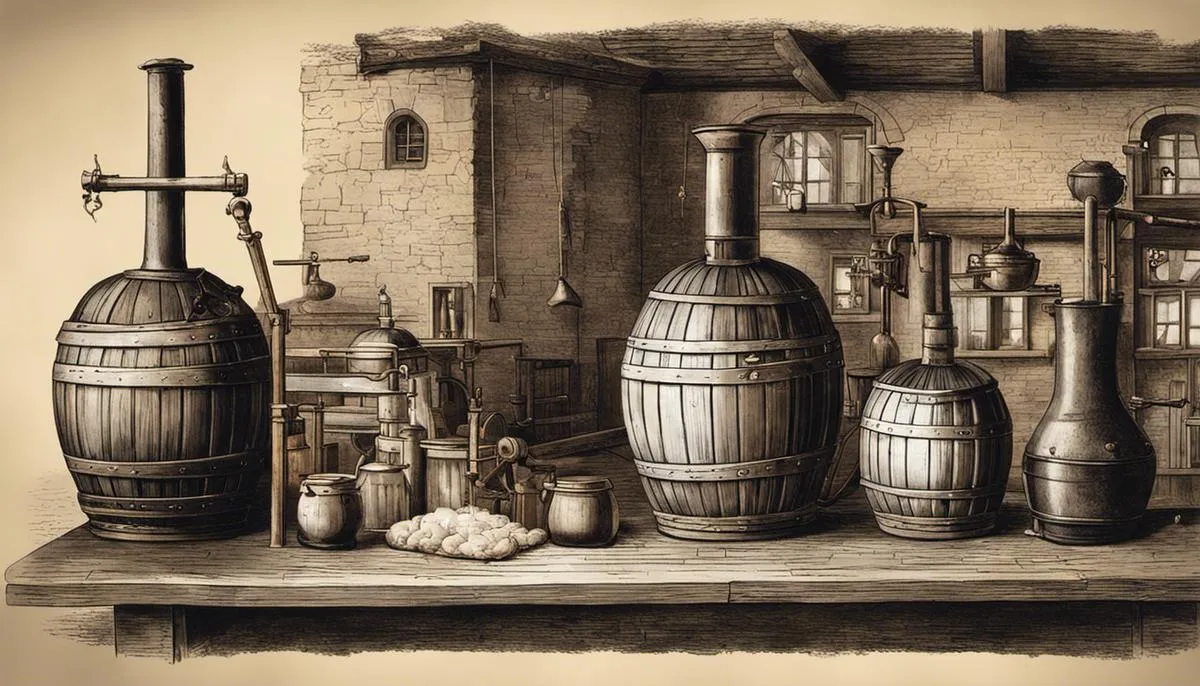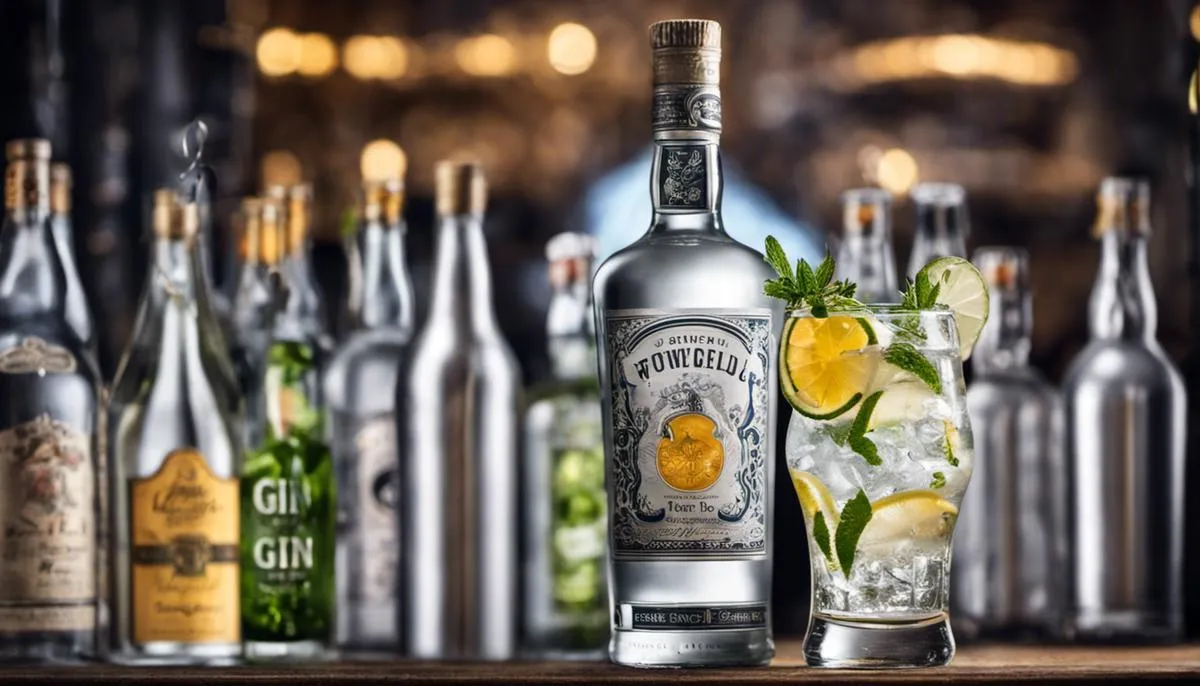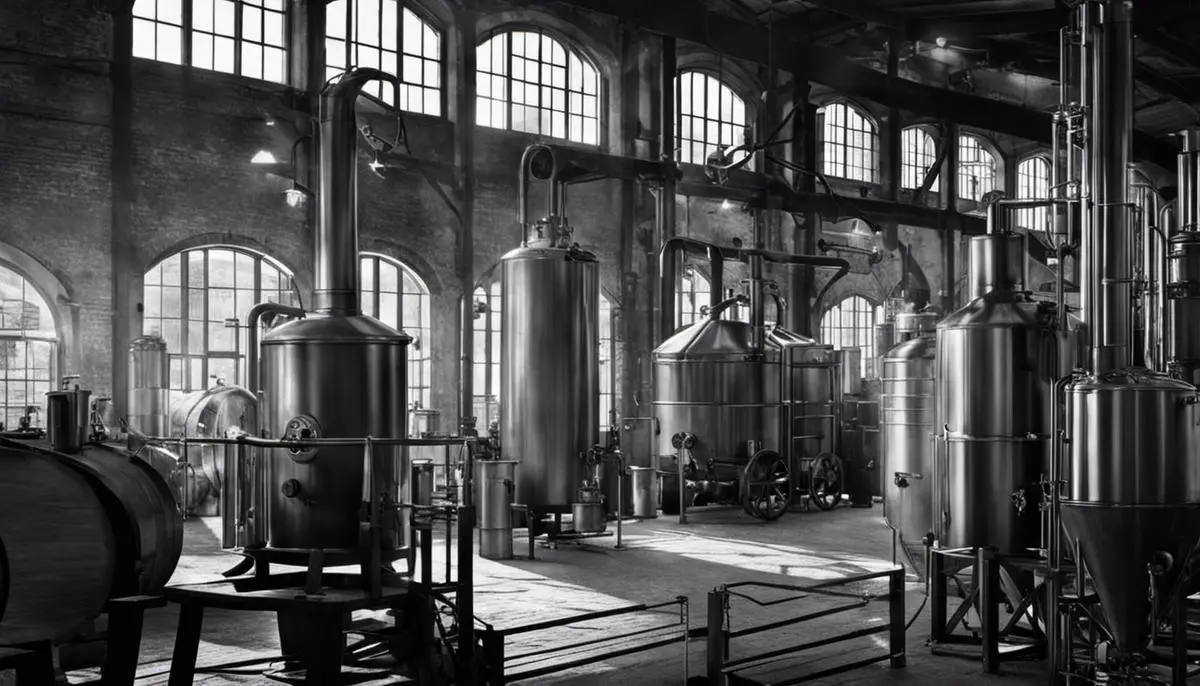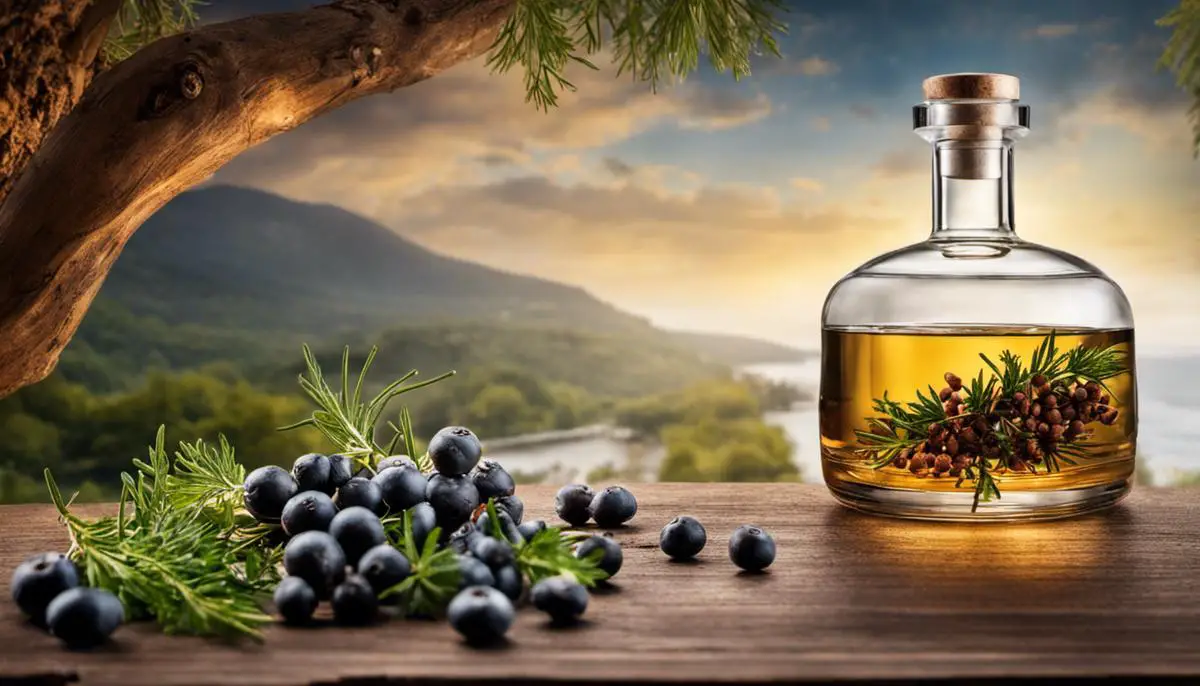Thriving in the bustling period of the Medieval era, gin, a powerful yet intriguing spirit, carved its path from simple medicinal remedy to an international delight savored across continents. Originating in the heart of Holland where it was distilled and refined for therapeutic purposes, gin slowly transitioned into the realm of pleasure and societal indulgence, consumed with a thirst that transcended borders. As it traveled across the seas, England became home to a unique chapter in the spirit’s history, witnessing a ‘gin craze’ that would define the political, social, and economic atmospheres of the time. Yet, this was merely the beginning of gin’s complex narrative, one which would undergo significant evolution through the centuries, from the processes of industrialization to the birth of London Dry Gin and eventually its global spread. Today, gin stands as a testament to the nostalgia of history and the enticing allure of modern fusion, epitomizing a spirit that has mastered the art of reinvention.
Origins of Gin
Origins of Gin
Gin’s early beginnings can be traced back to medieval Europe, more precisely, to Holland, where it was originally brewed as a medicinal concoction. The term “gin” originated from either the French “genièvre” or the Dutch “jenever,” which both mean “juniper.” At its core, gin is simply distilled alcohol, but the addition of juniper berries during the distillation process is what distinguishes gin from other spirits.
The Medicinal Tonic
In these early days of gin’s history, the drink was not associated with merriment or social gatherings but was instead treated as a medical tonic. The juniper berry was highly regarded for its health-giving properties. It was believed to cleanse the body’s system and also be a cure for gout and stomach problems.
Early Distillation Process
The distillation process was a far cry from the refined techniques we see in modern gin production. Early distillers mashing a mixture of fermented barley, rye, or corn and infusing this with a range of botanicals, primarily the juniper berries, and distilled the resulting liquid. The product was a rough, often harsh drink that possessed a potent medicinal smell and, no doubt, an equally strong flavor.
The Evolution of Gin
The consumption of gin during its formative years was a rather sober affair, befitting its medicinal roots. It was typically consumed in small quantities, either neat or mixed with water. The drink had not yet evolved into the cocktail-friendly spirit we know today.
The Rise in Popularity
However, as with many beverages initially created for health benefits, gin eventually transcended this role. By the 17th century, the Dutch were consuming it not just for medicinal purposes, but also as a popular alcoholic beverage. Britain’s King William III, also a prince of Orange in Holland, played a role in popularizing gin in Britain in the late 17th century through the issuance of the corn laws.
The Gin Craze
These laws made the production of domestic spirits more economically viable. This, combined with a relaxation of the laws on distilling, led to a rapid increase in gin production and consumption in England. Gin was inexpensive to produce, cheaper than beer or wine, and quickly became a favorite among the masses. However, excessive consumption led to the Gin Craze in the early 18th century, infamous for widespread alcoholism and social decay.
Modern Gin
Gin, a beverage cherished today, has its roots embedded in a rich history. Its tale transgresses from being a medieval remedy to a staple at present-day social affairs. Although the infamous ‘gin epidemic’ in England was repressed through a series of Gin Acts, the popularity of this intoxicant continues to persist.
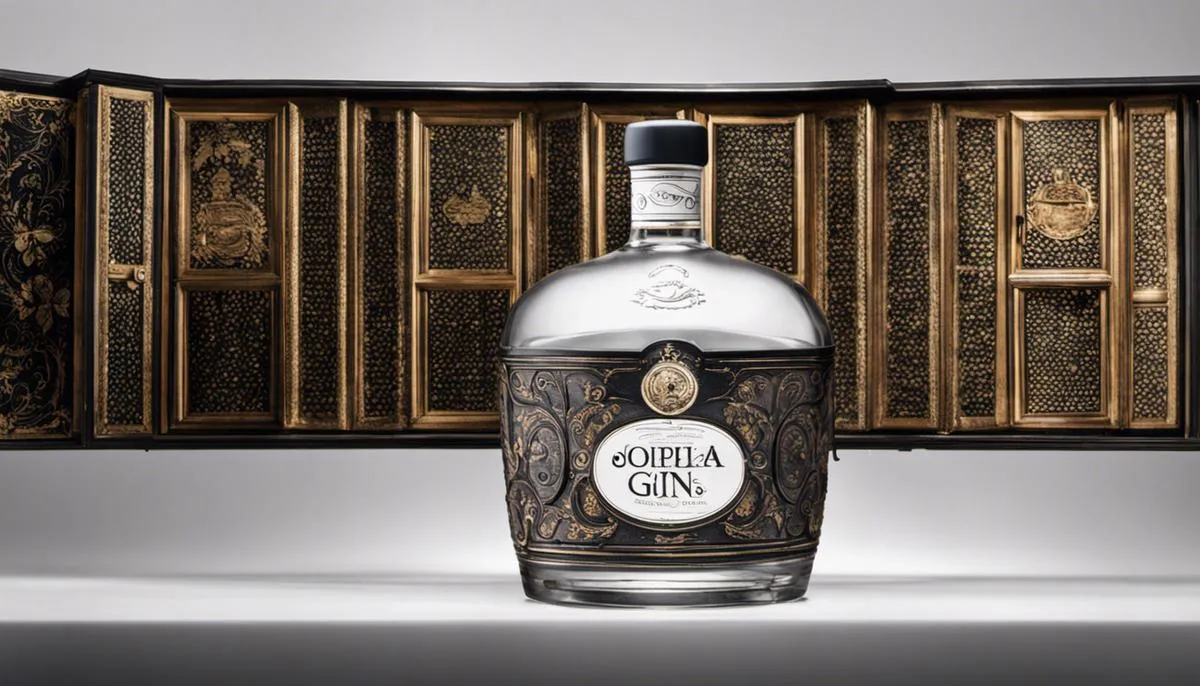
Gin in 17th Century England and the ‘Gin Craze’
Gin’s Intensifying Popularity in England
The 17th-century English society saw the introduction of gin, marking the era of the Glorious Revolution. This period bore witness to Dutch William of Orange’s ascension to the throne by peacefully ousting the then Catholic King James II. Along with him, William brought ‘Genever’, better known as gin – a beverage traditionally sipped leisurely during Dutch social gatherings. This marked the inception of Gin’s popularity in England.
William of Orange and Queen Anne’s Influence
Gin production quickly soared under William’s rule. He leaned heavily on England’s pre-existing love for spirits, especially beer and ale, to popularize gin. He allowed unlicensed gin production while imposing heavy taxes on imported spirits. Under Queen Anne, who succeeded William III after his death, this output was further encouraged. She passed the Act of 1702 that allowed gin to be sold for as cheap as a penny, making it a beverage essentially available to all – even the poorest in society.
The Gin Craze
The gin craze unfolded in the first half of the 18th Century and was characterized by the wide-scale consumption of gin by all levels of English society, but especially the poor. High rates of alcoholism, crime, and social disorder, particularly in London, were directly linked to excessive gin drinking. It was a phenomenon fueled by various factors, one being the drastic increase in urban poverty following the post-warring period.
Gin’s Impact on 17th Century England
The boisterous and rampant consumption of gin led to a host of social and economic problems. Gin’s high alcohol content and cheap price led to significant alcohol abuse. London witnessed a rise in crime, idleness, and social disorder. It was even blamed for population decline because of reports of fertility issues and neglected children. Hogarth’s famous etching “Gin Lane” clearly illustrates the societal decay brought on by gin.
The Gin Acts
Severe measures were put in place to curtail gin consumption and eventual social ruin. Beginning in 1729, the Gin Act was passed, which imposed high taxes on retailers and led to riots in the streets. Subsequent acts followed – in 1736, 1743, and 1751 – to reduce gin’s destructive impact. The 1751 Gin Act was successful, imposing a licensing system on gin sellers and making gin distillation more of a legitimate, respected business.
Politics and Gin
In England, gin became a political issue demonstrating the struggle between landed interests – who favored less corn consumption due to farming – and city-dwellers, who favored more grain usage for distilling spirits. Furthermore, the moral panic and public disorder, associated with the Gin Craze, instigated decisive state intervention in the spirits market with the gin laws.
English society’s complex relationship with gin is perfectly captured with this quote from artist William Hogarth, “Drunkenness of the mother will be visited on her infants.” This sentiment effectively portrays the fear, criticism, and eventual societal impact gin generated in the 17th century England. It wasn’t simply a trend; it was a ‘Gin Craze’ that brought drastic legal and social changes.
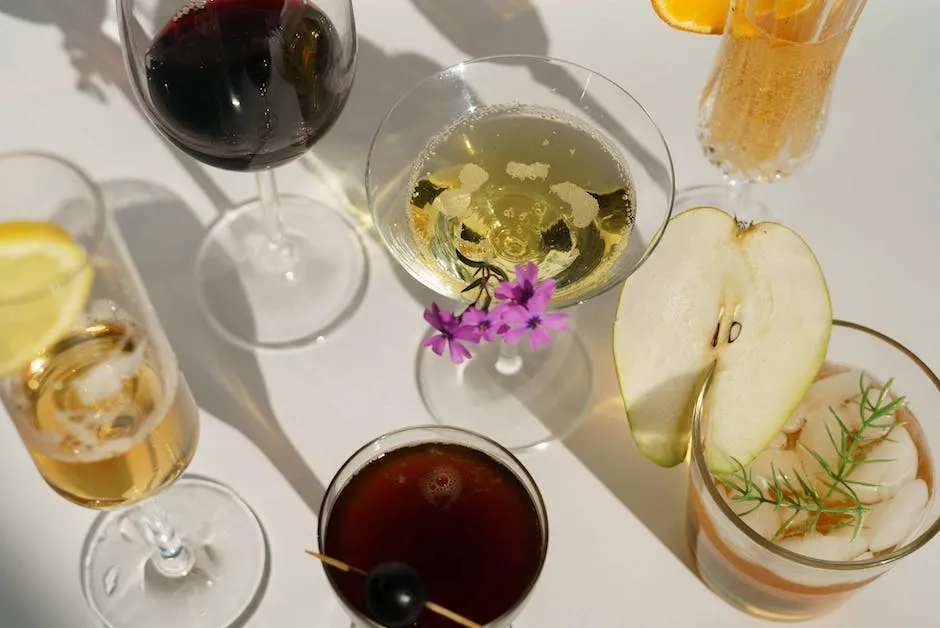
Gin in the 18th to 20th Century: An Era of Evolution
Gin’s 18th Century Surge in Popularity
Primarily flavored with juniper berries, gin began its reign in the 18th century. During this period, often referred to as the ‘Gin Craze,’ England continued its deep dive into gin consumption, reaching a peak of 10 million gallons in 1751. However, this addiction was not without its consequences. Gin became the drink of choice for the poor and was frequently linked with crime, destitution, and even infanticide. The British government then decided to intervene, passing a series of regulatory acts including the notable Gin Act of 1736. These legal controls made the production and sales of gin more regulated and, eventually, more sophisticated.
Industrialization and the Continuous Still
The most significant advancement that impacted gin production was made in the 19th century due to industrialization: the invention and introduction of the continuous still. The still, also referred to as Coffey still after its inventor Aeneas Coffey, dramatically changed the quality of the gin that was produced. Continuous stills allowed for purer and more consistent distillation, with the ability to reach higher proof levels.
Birth of London Dry Gin
While these industrial advancements were taking place, another remarkable transformation appeared in the form of ‘London Dry’ gin in the early 19th century. This style of gin was notably drier, less sweet than its predecessors, and received a distillation process which preserved the natural flavors of its botanicals. While it was derived from older gin traditions, London Dry gin marked a turning point for the spirit’s reputation, elevating it from a problematic drink of the lower classes to a more refined and globally accepted spirit.
Gin Spreads Across the Globe
As the 19th century dawned, gin had started its steady spread across the globe. British colonial influences played a large part in this. The Britons carried gin, particularly London Dry style, to wherever they traveled, and its consumption became popular in other parts of the world. Moreover, gin became a key ingredient in many cocktails created during this era.
Gin’s Role in American Prohibition
The early 20th century marked another dramatic period for gin, especially in America, where it played a pivotal role during the era of Prohibition (1920-1933). Prohibition marked an era of illegal spirits production, and gin was one of the easiest spirits to produce illicitly. Often referred to as ‘Bathtub Gin’, this homemade liquor became a staple of speakeasies and home parties. These drinks were frequently sweetened to mask the harshness of poorly-made spirits. Post-Prohibition, gin’s reputation improved, and it began to be used in more refined cocktails.
The journey of gin from the 18th to the 20th century demonstrates a steady evolution of the spirit, marked by continuous refinement and diversification. Despite its rocky inception, gin eventually carved a niche for itself, gaining international prestige as a preferred drink of choice. Whether it be a traditional London Dry Gin, an element of a cocktail, or a diverse array of contemporary variations, the narrative of gin’s growth and transformation progresses through time.
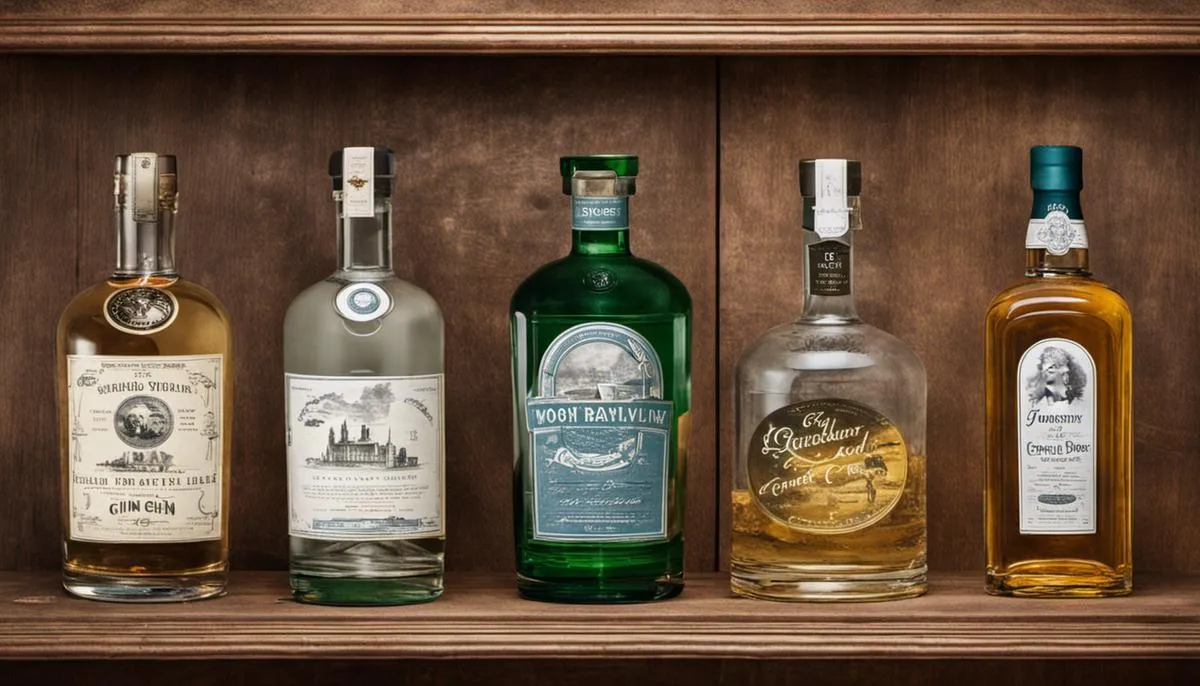
Modern Gin: Revival and Renaissance
The Ascendancy of Contemporary Gin
Formerly perceived as a health elixir, gin underwent a significant makeover in the 20th century. The ‘London dry’ gin, renowned for its exquisite flavor and reduced sweetness, gained widespread popularity during this era. This shift in preference was largely driven by breakthroughs in distillation technology, particularly the introduction of the Coffey or continuous column still, designed by Aeneas Coffey in 1832. This distillation method noticeably improved the taste and quality of gin.
Craft and Flavored Gins
Gin production took a shift towards experimentation in the 1980s and 90s, resulting in the birth of the craft gin industry. Distillers began reimagining the taste by using a wide variety of botanicals, which previously had been largely dominated by juniper. The integration of exotic spices, fruits, and even vegetables added depth and character to the spirit. Craft distilleries started popping up across the globe, distinguished by their commitment to quality over quantity and their innovative flavor profiles created a new wave in the gin industry.
Gin Across Continents
The resurgence of gin was not confined to a particular geography – it echoed through various continents – particularly in the United States, the United Kingdom, Spain, and Australia. The United States saw a rise in gin consumption during the ‘cocktail culture’ of the 1980s, with the martini becoming a symbol of sophistication. Britain, the birthplace of gin, recognized the spirit’s potential for variety and contributed significantly to its renaissance.
Spain went a step further, creating the ‘Gin and Tonic’ culture, serving them in large balloon glasses with extravagant garnishes. In Australia, the burgeoning craft distillery scene focused on using indigenous botanicals, thereby creating gins reflective of their unique terroir.
Noteworthy Brands
In the landscape of modern gin, several brands stood out. In the UK, brands such as Bombay Sapphire, Hendrick’s, and Tanqueray enjoyed international recognition. America’s craft gin scene saw the rise of brands like Aviation and Death’s Door, and in Australia, Four Pillars and Sullivans Cove used native ingredients to create flavors truly unique to the region.
Industry Trends and Future Outlook
The gin industry has grown massively in the past few years, and trends indicate it won’t slow down any time soon. Consumers’ tastes continue to evolve, leaning towards more unique, artisanal products. This has prompted distilleries to experiment even further, introducing unprecedented flavors to the market, such as smoked, barrel-aged, and even savory gins. The future of gin appears brighter than ever, with the spirit constantly adapting and reinventing itself.
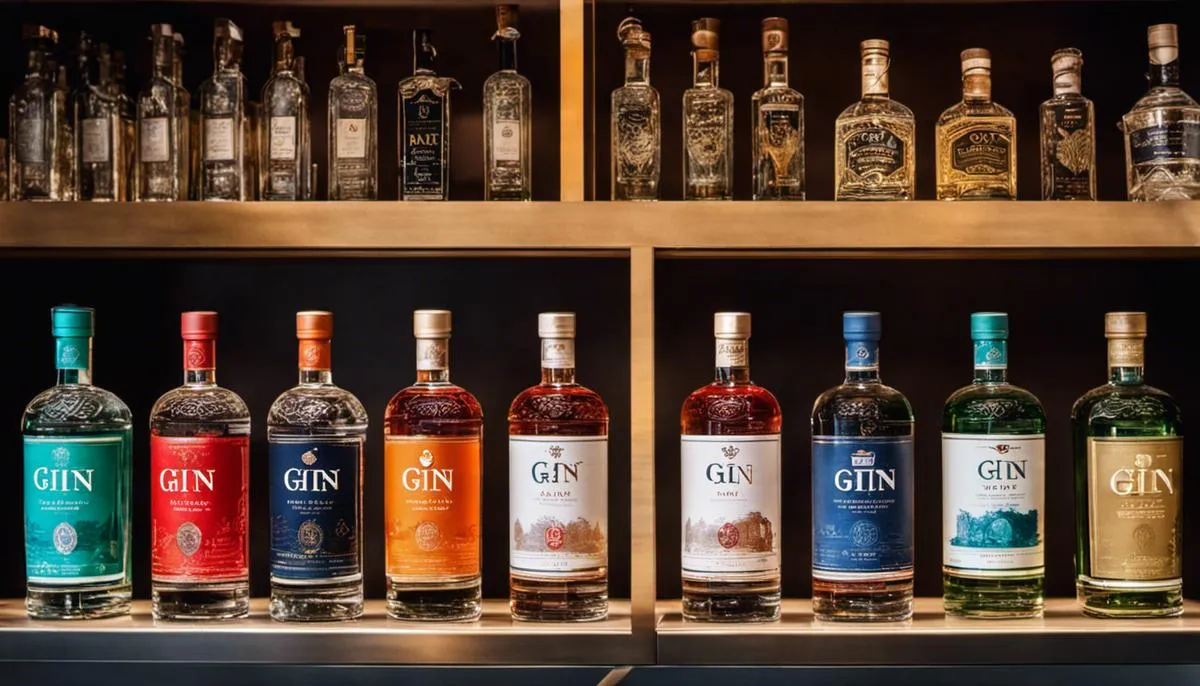
Enter the era of modern gin, where its flirty rendezvous with enchanting flavors, craft distillation techniques, and innovative branding techniques has inspired a renewed ardor for the spirit. Spanning key regions including the US, UK, Spain, and Australia, the gin industry’s vigorous resurgence is not only a tribute to its captivating history but also a promising glimpse into an exciting future. A universe that was once swathed in the homogeneity of production practices has now bloomed into a diverse landscape, an ode to the spirit’s inherent versatility. In the current renaissance of gin, we find a bevy of notable brands vying for distinction and superiority, each contributing to the ever-evolving gin narrative. As the tireless search for new distillation methods, unique botanical inclusions, and inventive consumption trends continues, gin’s future is, indeed, as mesmerizing as its vibrant past.

